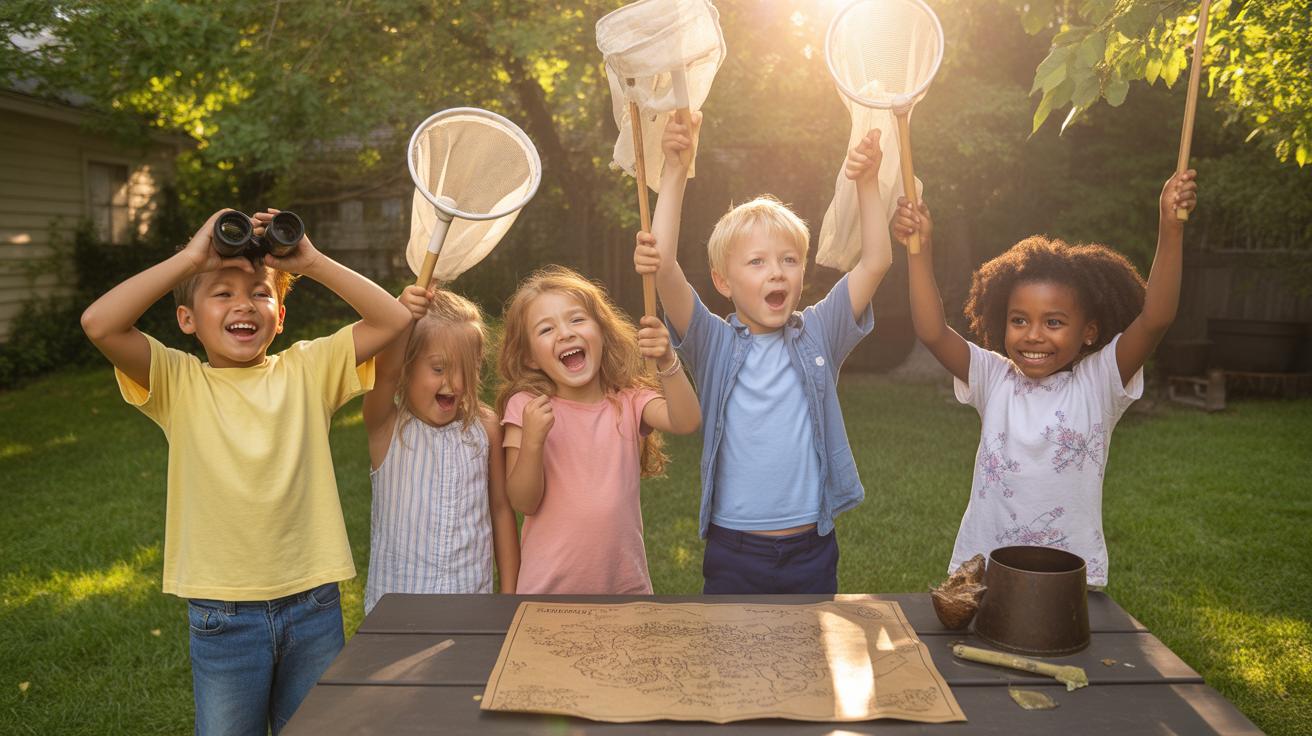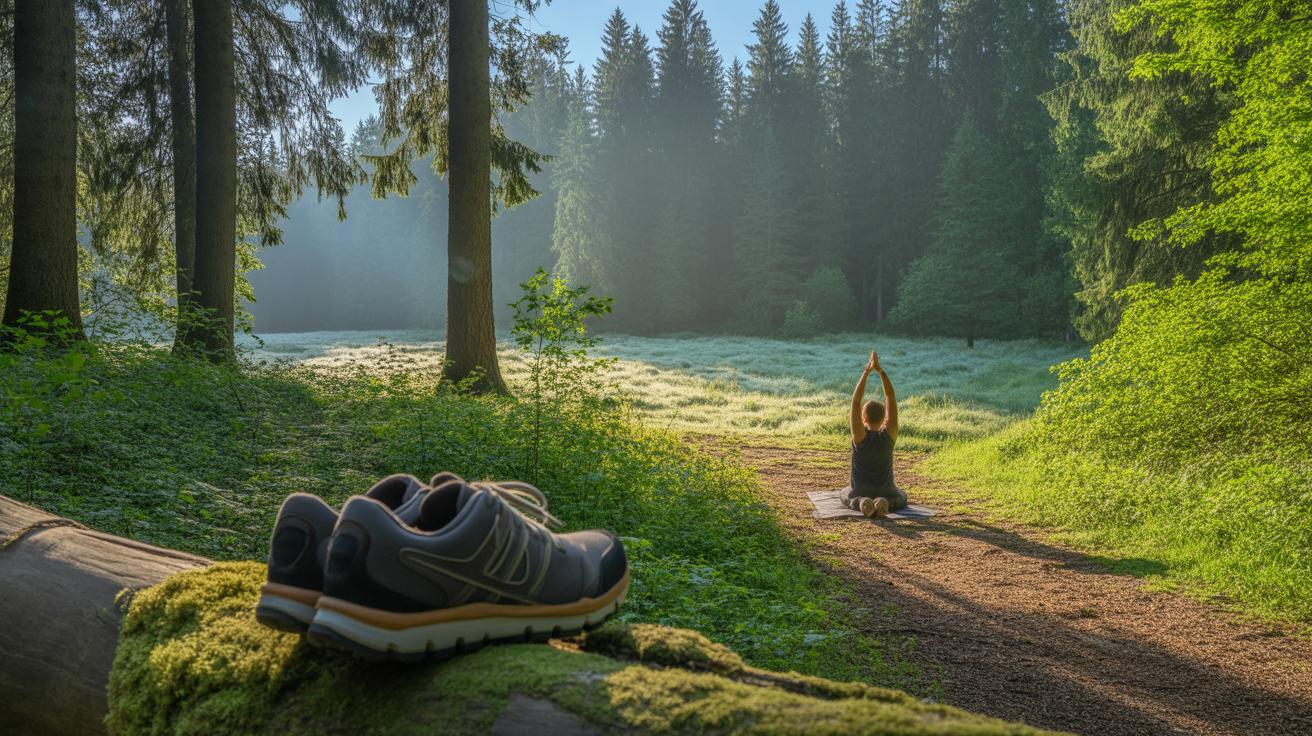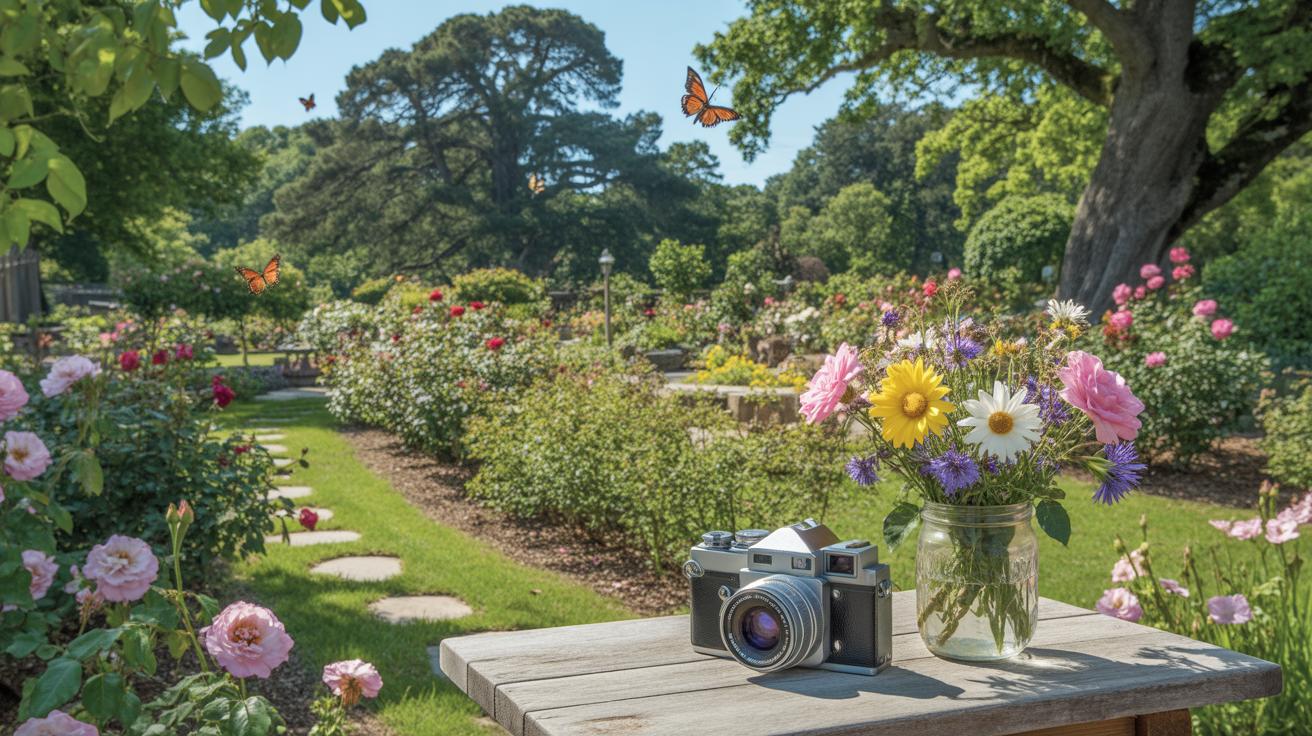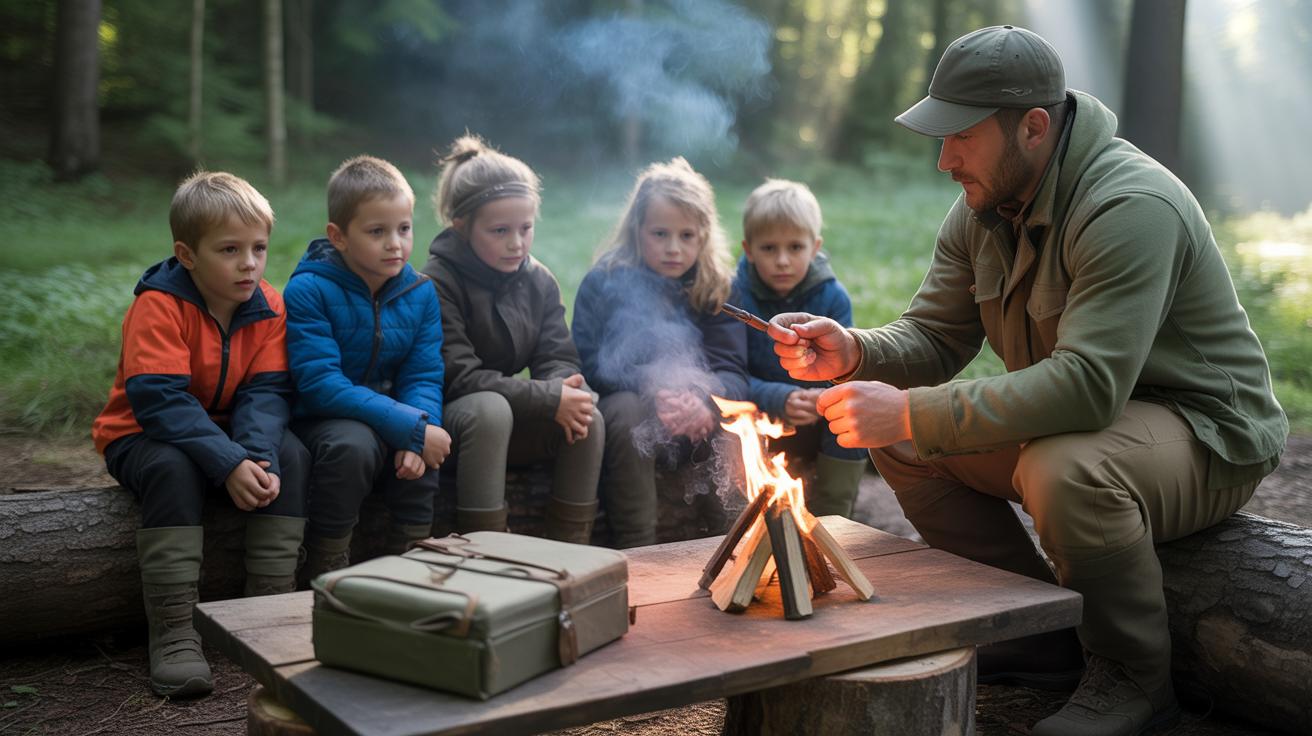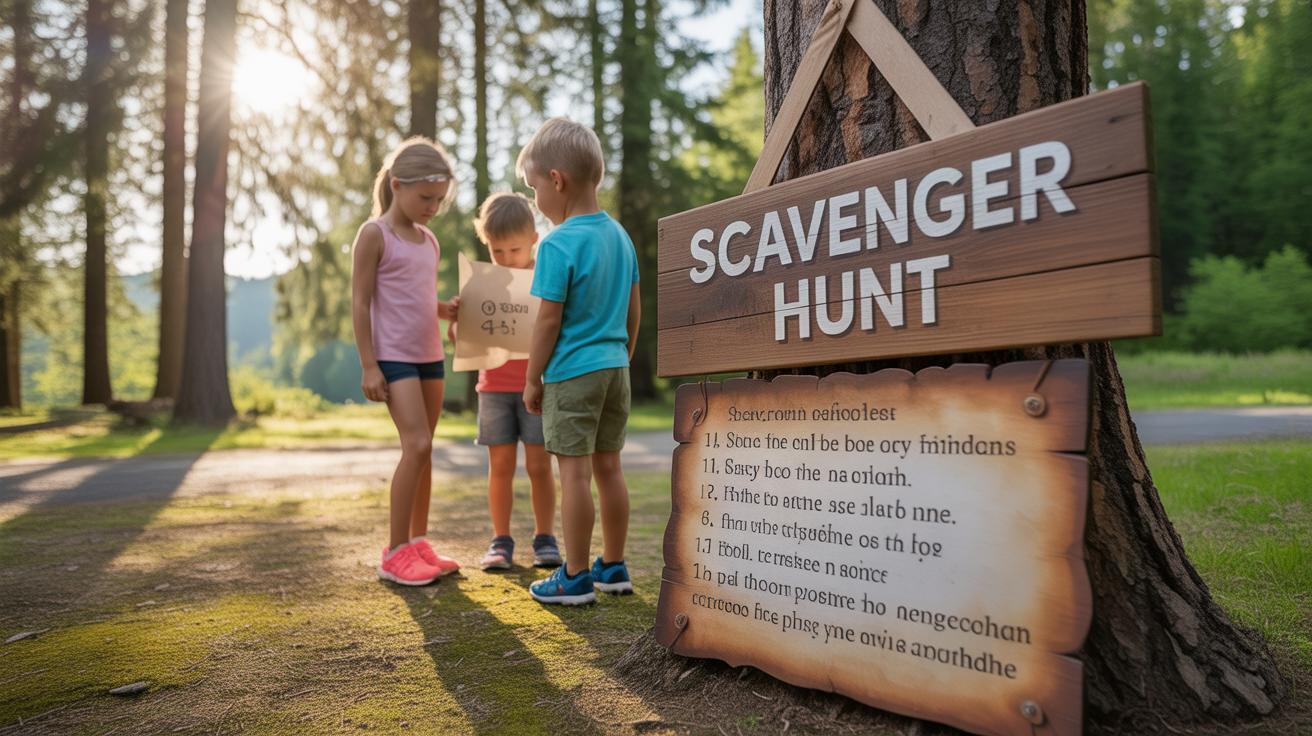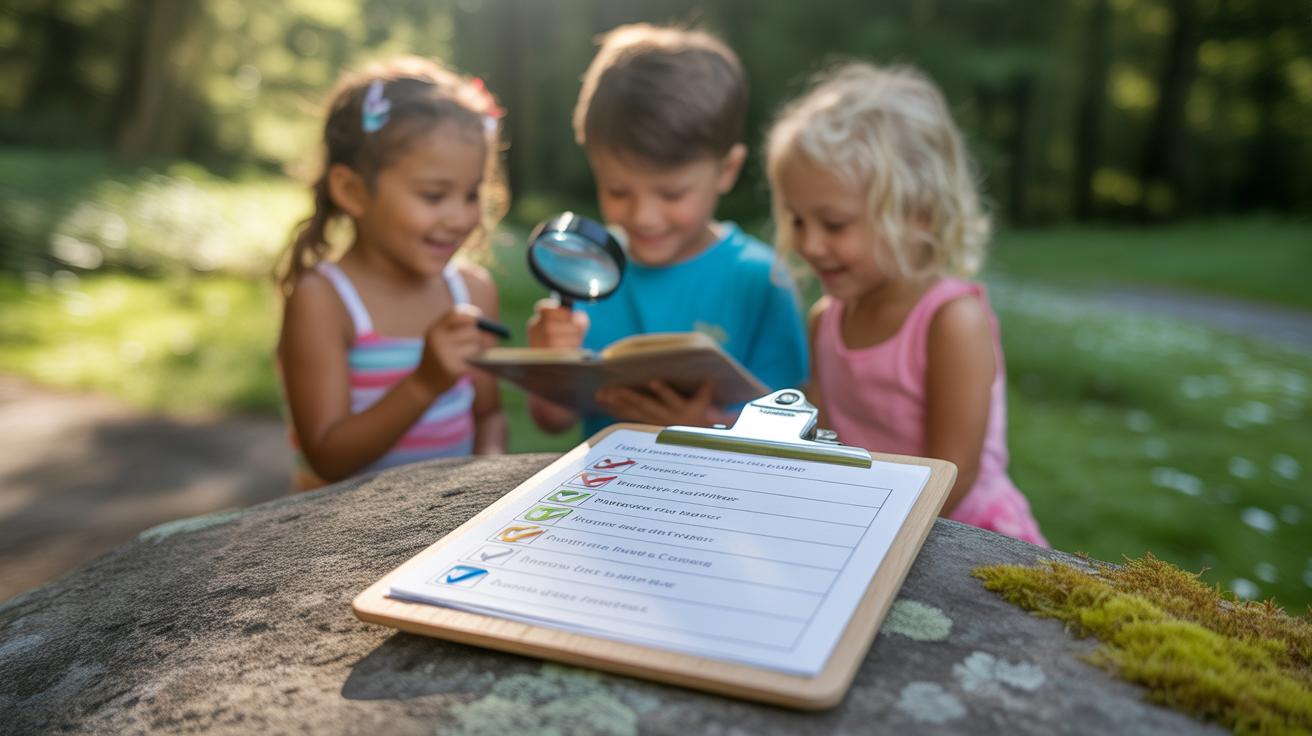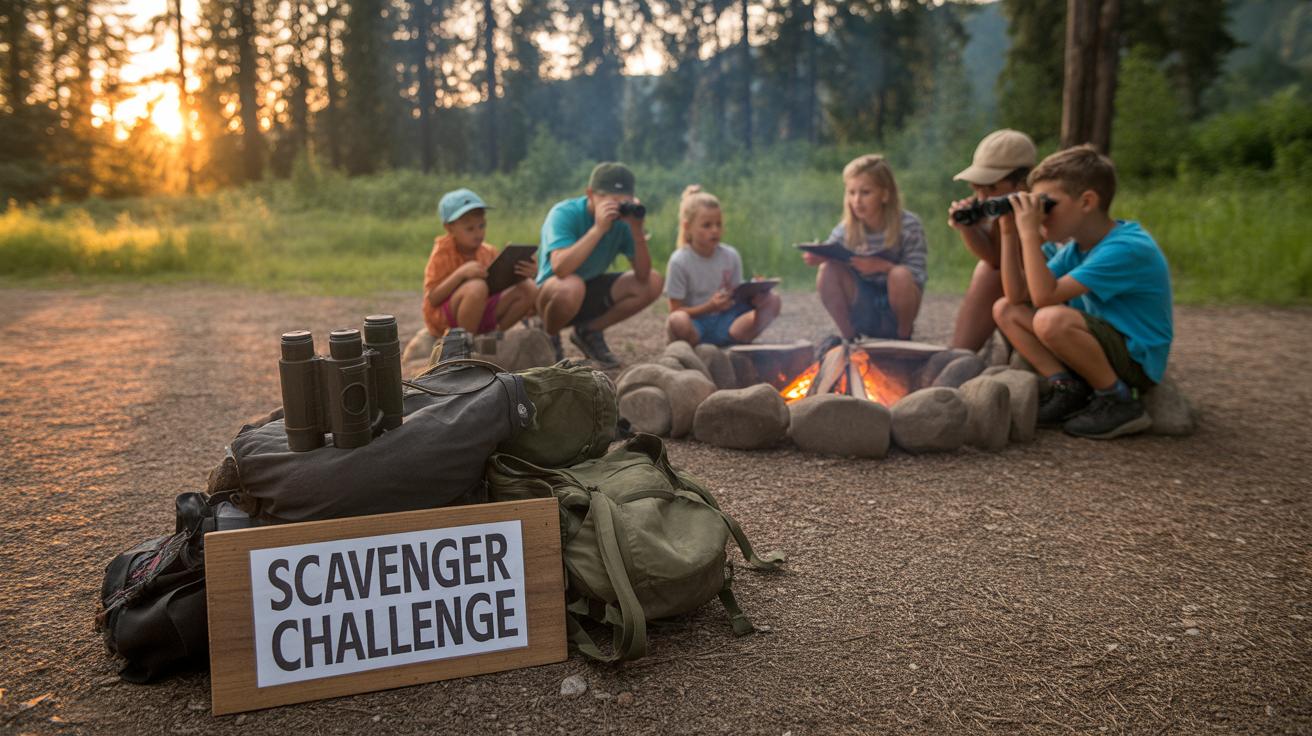Introduction
Summer is the time to get outside, have fun, and enjoy the warm weather. One great way to do this is with a backyard scavenger hunt. This activity is perfect for kids and families. It combines excitement, exploration, and teamwork all in one. You just need your backyard or a nearby safe outdoor area and a list of things to find or tasks to complete.
This guide will walk you through setting up a backyard scavenger hunt. You’ll learn how to create interesting clues, organize players, and keep the energy high. Plus, you will find ideas to make your summer days lively and full of adventure. Ready to explore the world in your own backyard? Let’s dive in and make this summer memorable with fun activities right outside your door.
What is a Backyard Scavenger Hunt
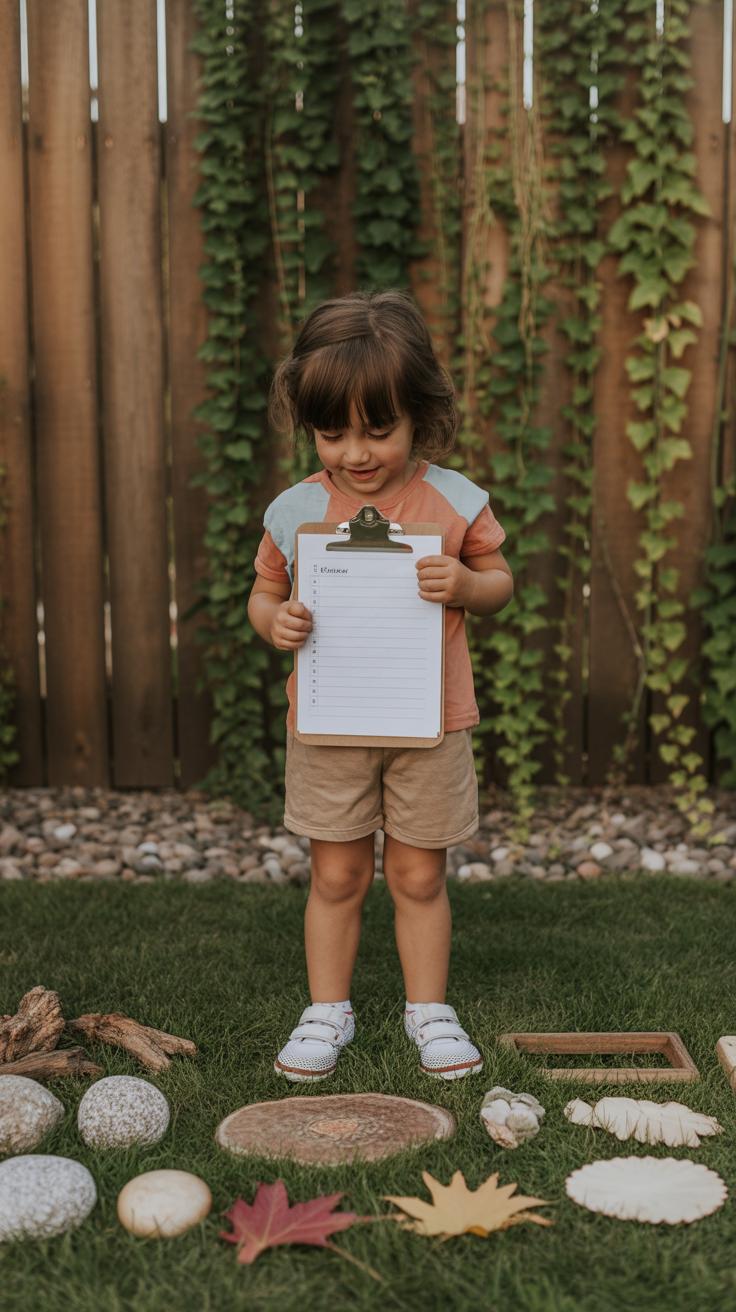
A backyard scavenger hunt is a simple, yet entertaining game where players search for specific items or complete certain tasks hidden around a yard or garden. The goal is to find everything on a list before time runs out or before others do. While the basic idea is straightforward, the game can take many forms—with clues, riddles, or just a list to check off.
It appeals to all ages because it mixes exploration with a little challenge. Kids love the thrill of discovery, while adults might enjoy the chance to step away from screens and enjoy some fresh air. Even if someone is a bit competitive or just curious by nature, the game offers a shared sense of adventure. Plus, it’s flexible—you can make it as easy or as tricky as you like, depending on who’s playing.
Basic Rules of the Game
The rules usually stay pretty simple, which helps everyone jump in easily. Here’s how it generally goes:
- Make or get a list of items hidden or placed around the yard.
- Decide if players hunt solo or in teams.
- Set a time limit to find the items or complete tasks.
- Once an item is found, the player or team marks it off the list.
- The first player or team to find everything or find the most by time’s end wins.
Sometimes you can up the ante by adding riddles instead of straight item names, or assigning points to harder-to-find objects. But, honestly, even the basic setup works well enough to get everyone engaged.
Benefits of Playing Outdoors
Playing outside during summer has perks you might not always think about. Physically, moving around your yard—even if it’s small—gets you off the couch, stretching your legs and moving your body. Running, bending, reaching—they all add up.
Mental benefits? They’re just as important. Outdoor games like scavenger hunts help improve focus and problem-solving skills as players scan the environment and figure out clues. Plus, exposure to sunlight boosts mood and vitamin D levels, which can make a big difference after those long winter months.
Sometimes, simply being outdoors eases stress, making it easier to relax and enjoy the moment, even if the hunt gets a little competitive. So, it’s not just about finding things in the yard—it’s about engaging with your surroundings and yourself in a way that feels a bit different from everyday routines.
Planning Your Scavenger Hunt
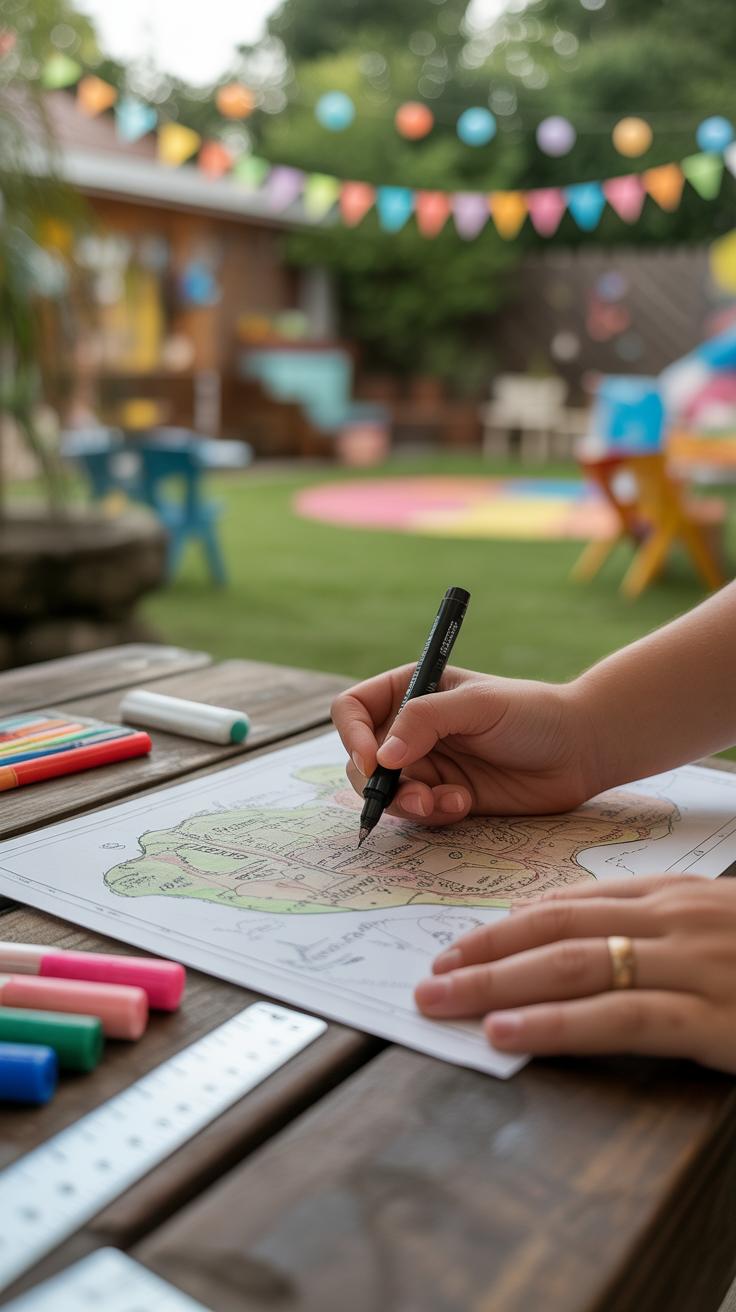
Choosing a Safe and Fun Location
Picking the right spot in your backyard can shape the whole scavenger hunt experience. Look for a place where kids — or adults, for that matter — can roam freely without too many hazards. Avoid areas with thorny bushes, uneven ground, or places where they might trip or get stuck. If you have a garden, that might be a perfect zone. It’s contained enough and has plenty to explore, like plants or hidden nooks. But don’t forget to check beforehand for any insect nests or sharp objects that could cause trouble.
Sometimes the best spots are the ones you almost overlook—like under a large tree or around a garden shed. The key is balance: somewhere familiar to the participants but with enough surprises to keep things interesting. You might want to section off the area with cones or markers to keep everyone safely within bounds. Think about how much room the players will need based on their age and activity level. And, well, maybe keep pets out of it to avoid any unexpected “guest appearances.”
Setting a Theme or Story
Adding a theme gives your scavenger hunt personality. Instead of just collecting random stuff, players get immersed in a little story or challenge. You might try a nature theme, asking players to find specific leaves, bugs, or rocks—the backyard then becomes a mini jungle. Or, for a twist, go pirate-themed: treasure maps, hidden “gold,” and clues that lead to secret spots. It makes the game feel less like a checklist and more like an adventure.
Animals can be another fun direction: imagining the yard as a wildlife preserve where participants spot “creatures” (which could be stuffed toys or pictures). Sometimes, themes just spark creativity. If you’re feeling unsure, start simple and see what catches the players’ imagination. Also, consider what materials or props you have on hand. Themes don’t have to be complicated but making it a little whimsical definitely boosts the fun factor.
Creating a List of Items and Tasks
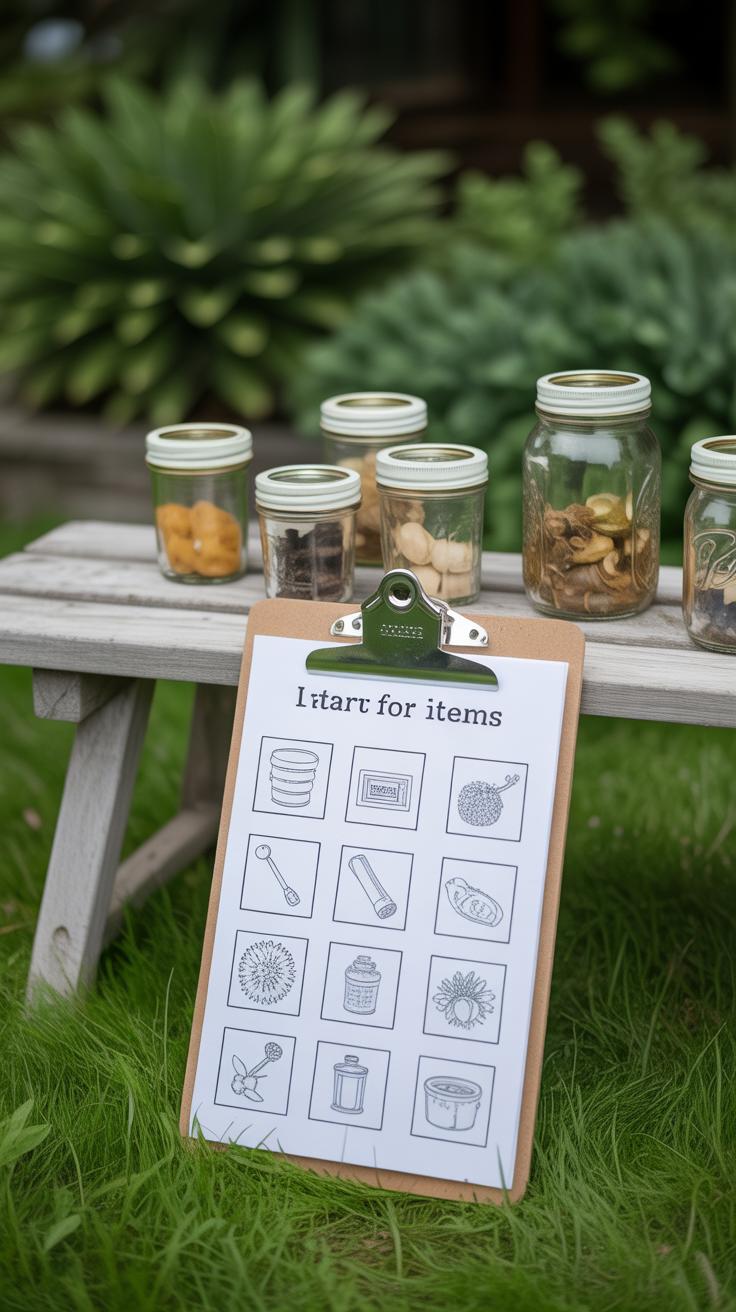
When building your list for a backyard scavenger hunt, it’s good to keep things simple but a bit unexpected too. Common items like a smooth pebble, a feather, or a dandelion are easy to find and work for nearly any backyard. But mixing in a few unusual things can spark curiosity—maybe a leaf with three points or a twig shaped like a letter.
It’s not just about collecting stuff. Throw in some fun tasks to break up the hunt and keep energy up. Ask players to sing a line from their favorite song or do a quick funny dance by the garden fence. Maybe have them find a flower and pretend it’s a telephone for a moment.
You might wonder: does every task need to be competitive? Not really. Some can be silly or collaborative, like spotting a cloud shape together or telling a quick joke before moving on. Keep the list flexible—if the backyard is small, a few meaningful tasks can matter more than many easy finds.
Here are some ideas to get you started:
- A smooth rock
- A blade of grass longer than your finger
- A pinecone or seed pod
- A bug (not caught, just spotted)
- A leaf with a unique pattern
- Sing a song chorus aloud
- Do three jumping jacks
- Mimic the sound of a bird
- Draw a smiley face in the dirt
- Tell a short riddle
Mixing objects with actions keeps the game lively. Plus, it gives everyone chances to shine in different ways. I think that’s what makes a scavenger hunt feel less like a chore and more like a play adventure in your own backyard.
Organizing Players and Teams

When you’re setting up a backyard scavenger hunt, figuring out how to group players can really shape the whole experience. Do you split everyone into teams, or let them go solo? Each option changes the game’s pace and vibe. Teams bring in collaboration, which can be fun and sometimes chaotic. Solos focus all attention on the individual effort but might feel a bit quieter. It depends a lot on your group—kids might prefer the buzz of teamwork, while adults sometimes enjoy going solo for a relaxed challenge.
If you choose teams, assigning roles can keep things balanced. Think about having:
- Leader: Someone who keeps the group organized and makes quick decisions.
- Recorder: The note-taker who crosses off found items and keeps track of scores.
- Finder: The go-getter, the one who actually hunts down items and solves clues.
This can prevent the usual “one person does everything” scenario and gives everyone a chance to contribute. Also, it helps if you mix different strengths—like pairing a natural planner with an energetic finder.
One tricky part is managing fairness. Sometimes, bigger teams have an edge, but smaller groups or solo players can be quicker on their feet. Maybe tweak the list to fit team sizes or set time limits to keep things balanced. Watching this unfold once, you’ll notice how roles evolve—sometimes the leader steps back, or the recorder starts spotting items first. If a team dynamic feels off, you can switch roles mid-game. That tends to keep everyone involved and less frustrated.
Designing Clues and Maps
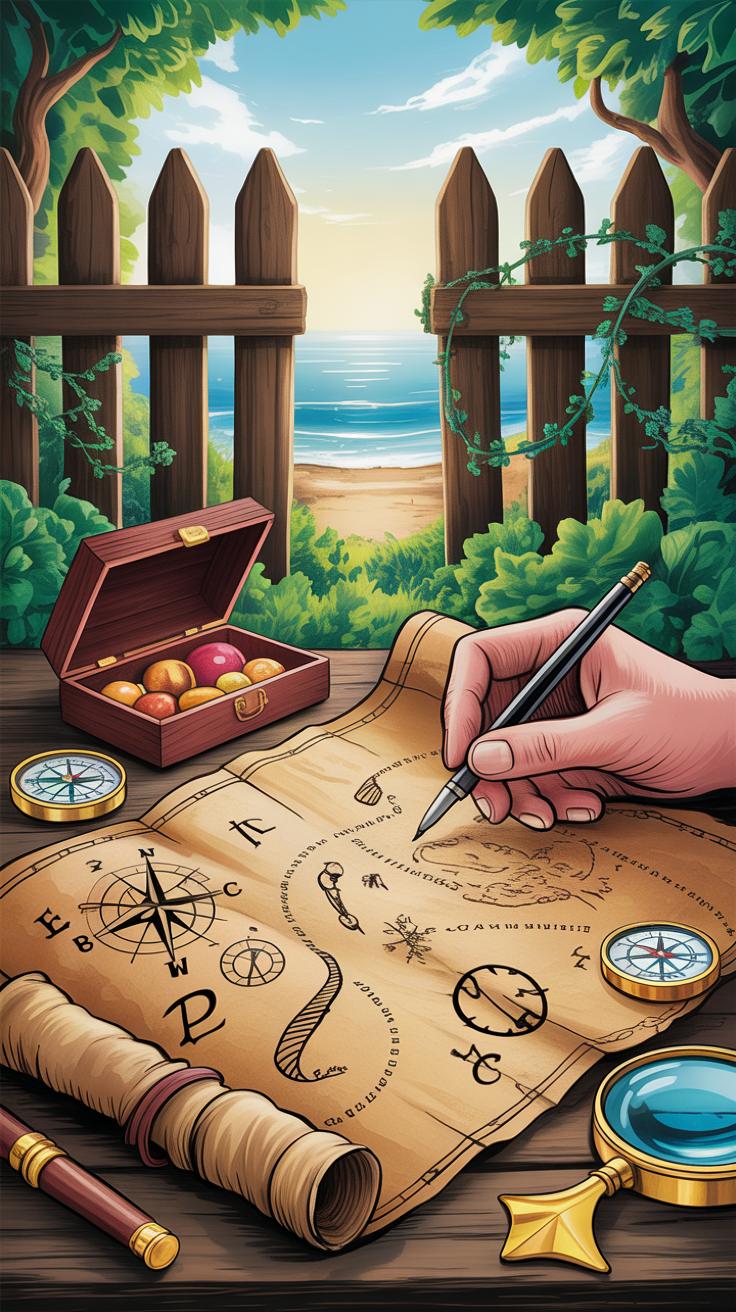
Creating clues for a scavenger hunt isn’t as simple as just writing what to find next. You want players to feel challenged but not frustrated. So, aim for clues that are straightforward enough to follow but require a bit of thinking—like riddles with a clear answer or hints that nudge players toward a specific area. For example, instead of saying “Find the red flower,” try “Look where the color of fire blooms closest to the garden gate.” It’s a small twist, but it makes the hunt more engaging.
When writing clues, keep sentences short to avoid confusion. You don’t need to be overly cryptic; sometimes too much mystery just slows the game down. Also, test your clues on someone unfamiliar with the area to see if they make sense.
Maps or simple drawings can make a big difference. Even a rough sketch of the yard highlighting landmarks or zones helps players visualize where to look next. You could mark general areas resembling “north tree” or “big rock near the fence.” Adding symbols or keys to your map introduces a layer of interaction. Sometimes a hand-drawn map feels more approachable and less like work than a typed one. Plus, kids tend to enjoy figuring out visual hints just as much as verbal ones.
Using both clues and maps together balances the hunt. Players might rely on the map for overall navigation but turn to clues for specific items. It blends logic and creativity, making the outdoor game feel more like a real adventure. Do you prefer puzzles or straightforward hints? Testing both might surprise you how different groups respond.
Setting Rules and Time Limits
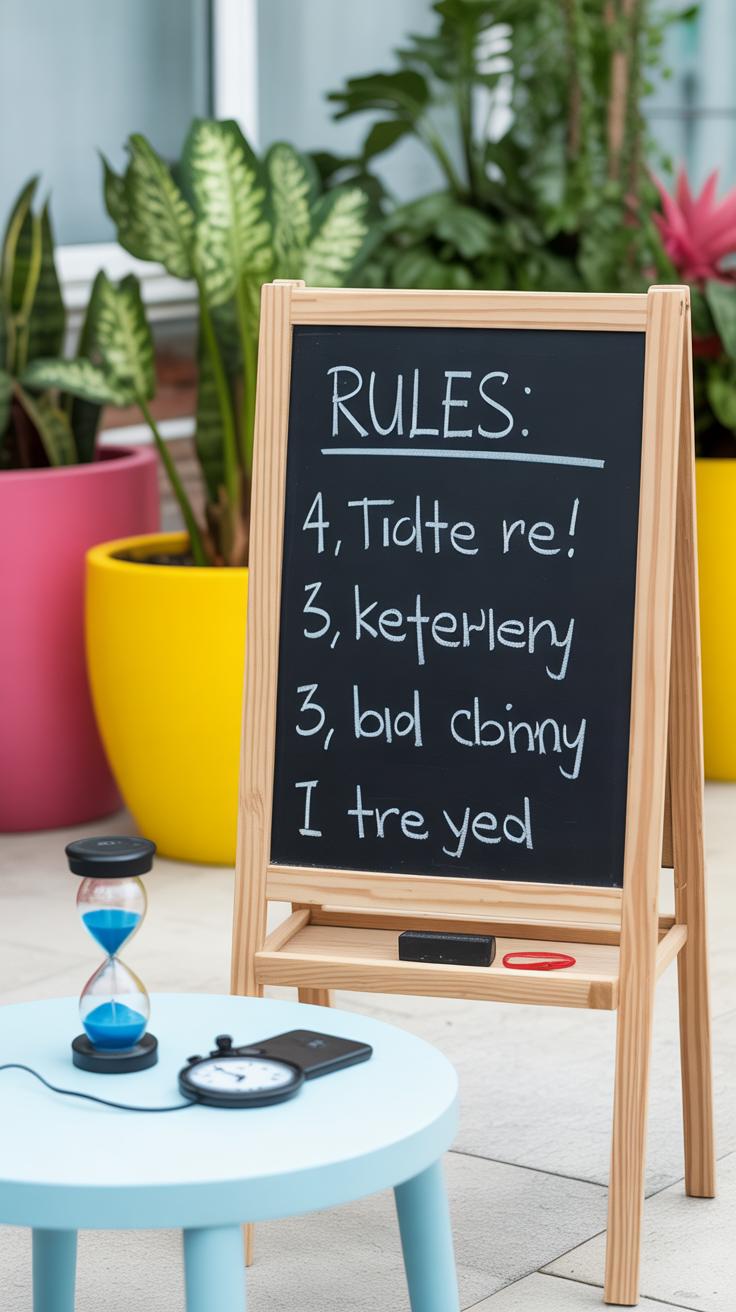
Before starting your backyard scavenger hunt, it’s a good idea to set some clear rules on behavior and safety. Think about what sorts of actions should be off-limits. For example, no running near fragile plants or no climbing fences. Setting these boundaries helps avoid any confusion during the game and makes sure everyone understands what’s expected. You might want to explain the rules calmly and check if all players, especially kids, actually get them. Sometimes, simply reminding them that the goal is fun — not to rush or compete aggressively — keeps things friendly. Also, consider how you’ll handle disputes if they come up. Will you act as the judge, or do you want a group decision? It’s a bit of a balancing act.
When it comes to safety, there are some basics worth highlighting. Playing in the shade, having water handy, and being aware of any hazards in your yard—like pools or thorny bushes—can’t be overlooked. You could assign an adult or older kid to keep an eye on these aspects. If your space borders a street, it’s best to limit play areas to fenced parts or indoors. Sometimes, it’s easy to let safety slide when kids are excited, so reinforcing these points before you start tends to help.
Timing is another piece of the puzzle. For younger children, shorter rounds work better—maybe 15 to 20 minutes—since their focus can fade quickly. Bigger groups or older kids might enjoy a half-hour or more, but it really depends on how challenging your clues are. If the game stretches too long, enthusiasm might drop; but cut it too short, and players may feel rushed or miss out on exploring. You could try flexible timing—an initial limit with some wiggle room—or watch the mood and adjust on the fly. It’s okay if your first attempt isn’t perfect; you figure out the best fit as you go along.
Starting and Running the Game
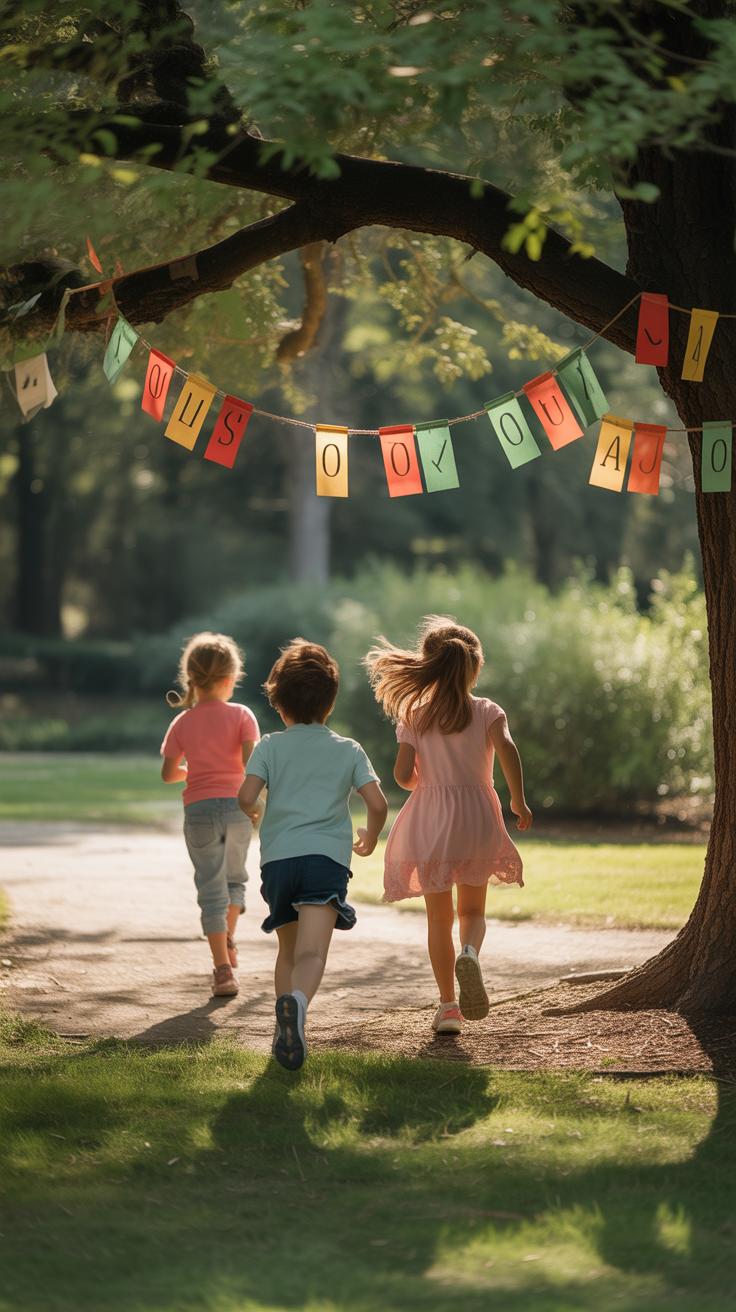
How to Start Off Right
Getting everyone on the same page from the very beginning matters more than you might expect. Take a moment to gather players and explain the rules clearly, but don’t turn it into a lecture. Keep things light and simple. For example, instead of rattling off a list, try telling a quick story about what they should look for or why the hunt is fun. That often sticks better.
Motivation at the start can shift the whole vibe. You might say something like, “Let’s see who can spot the first item fastest,” or challenge them to beat a personal best. It’s okay to be a bit playful or even a little competitive, as long as it feels fair.
Keeping Players Motivated
Once the game is rolling, you’ll want to keep an eye on how things are going. Watch for signs of waning interest — maybe someone’s lagging behind or looking bored. Interject with light, playful comments like “Looks like someone is on a secret mission!” or “Did anyone find a mystery item yet?” It helps keep energy up without feeling forced.
Don’t hesitate to throw in quick pauses. Five minutes to catch breath, share a funny story, or even celebrate small wins can work wonders. It breaks up the game so no one feels stuck or overwhelmed.
Also, consider swapping roles briefly if the game lasts long: have someone else give clues or serve as a buddy. It adds variety and brings fresh energy. Sometimes, even little changes can make the experience feel new again — which might be just what’s needed.
Wrapping Up and Celebrating Success
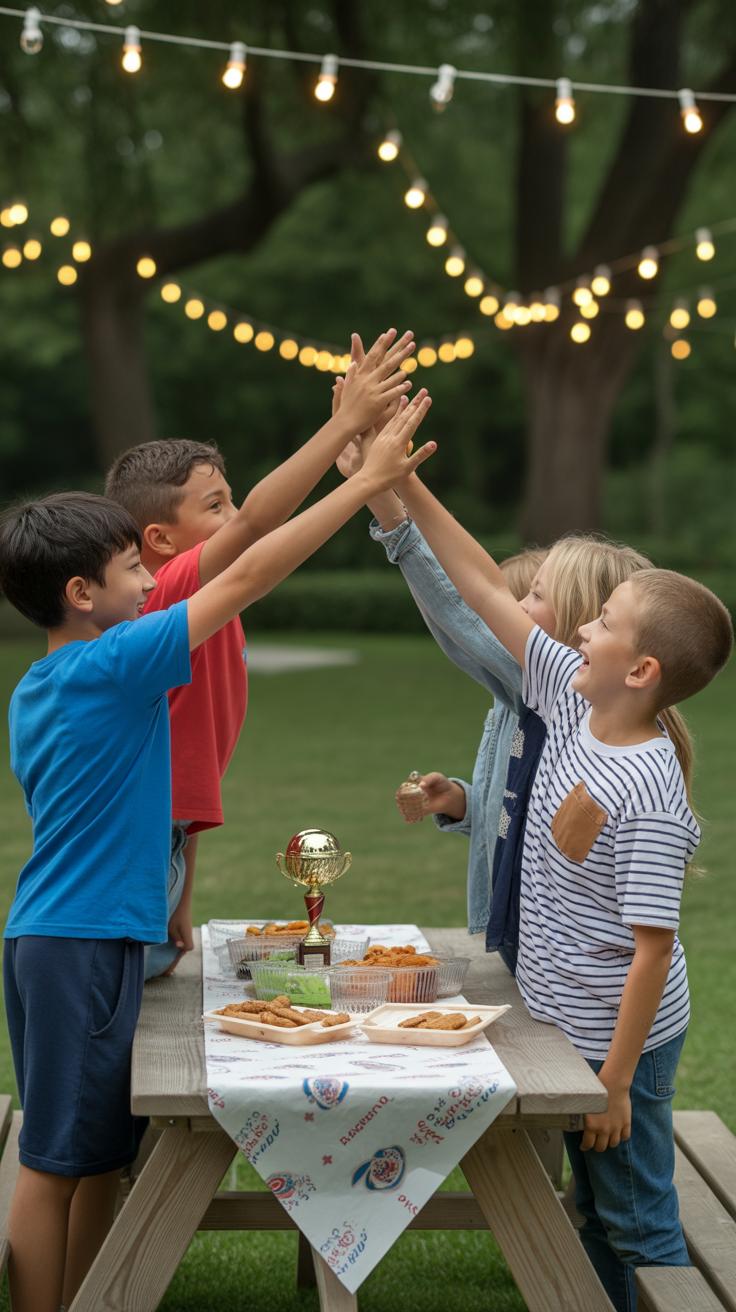
When the scavenger hunt winds down, it’s tempting to rush through the ending, but taking time to properly wrap things up makes all the difference. Gather everyone together somewhere comfortable—maybe under a shady tree or on the porch. You want a spot where everyone can see and hear well, so checking findings feels less like a chore and more like a shared moment.
Start by going through each item carefully. If teams collected physical objects, a quick inspection works well. For photo or checklist hunts, verify items with enthusiasm, but avoid making it feel like an interrogation. Participants are usually eager to show what they found, so keep the tone light. If something’s unclear, it’s okay to ask gently but stay fair. It’s not about perfection; it’s about fun and learning.
Declaring winners can be a bit tricky. Maybe points are close, or some discoveries are unique and hard to compare. Think about acknowledging everyone, perhaps with special shout-outs for the most creative find, the fastest team, or the best teamwork. This way nobody feels left out.
Simple prizes go a long way. Small trophies, certificates, or even homemade coupons for extra playtime or choosing the next activity create lasting memories. Sometimes, a shared treat like popsicles or a picnic works just as well as anything tangible. Remember, recognizing effort rather than just victory encourages future enthusiasm.
Have you noticed how a little celebration turns tired kids—or adults—into smiling champions? It’s worth a try, even if your awards are just applause and high fives. What matters most is the sense of accomplishment, not the prizes handed out.
Extending the Fun Beyond One Hunt
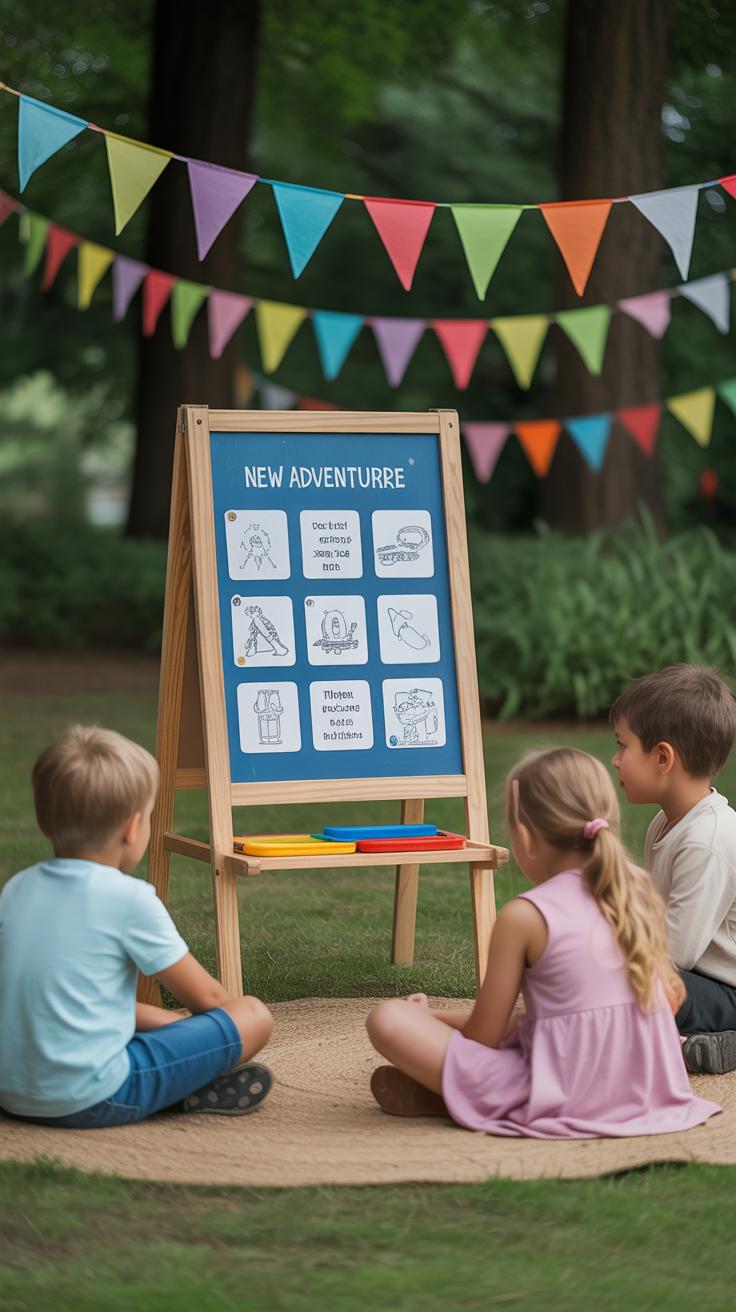
Once you’ve wrapped up your first backyard scavenger hunt, the fun doesn’t have to stop there. In fact, repeating the activity with small twists can keep everyone interested for weeks. You might think, “Do we really need to do the same thing again?” Well, changing it up a bit can make it feel brand new. Maybe next time, focus on finding different types of leaves or insects, or add riddles that point to each item. It’s surprising how a simple change in the theme refreshes the whole experience.
Try creating new challenges, like timing the hunt or turning it into a friendly competition. Maybe each player has a unique checklist that the others don’t know about. This keeps things unpredictable and pushes creativity. You could even bring in a nature journal to sketch the findings or note interesting details. It’s a chance to mix exploration with a bit of quiet reflection.
Pairing scavenger hunts with other outdoor activities also works well. Imagine following up the hunt with a water balloon toss or a quick game of frisbee. Or, set up a picnic with snacks waiting at the finish line — it adds a cozy reward everyone looks forward to. Sometimes, a short break for a backyard badminton set or a splash in a kiddie pool after hunting helps balance the energy levels, especially with younger kids involved.
Have you ever thought about combining a hunt with a simple craft afterward? Collecting natural items and using them to decorate or build something small keeps the momentum going, and it can be quite satisfying. These small variations turn what might seem like the same activity over and over into distinct experiences. Your kids, or whoever is joining, might start anticipating these little changes almost as much as the hunts themselves.
Conclusions
Backyard scavenger hunts offer a wonderful mix of movement, problem-solving, and outdoor enjoyment. By planning carefully and using creative challenges, you can keep players excited and engaged. This activity can bring families and neighborhoods together in a shared adventure. It helps children explore their surroundings, develop observation skills, and have fun exercising.
Summer days are best spent making memories and trying new things. With simple materials and imagination, you can turn your backyard into a playground full of surprises. Use these tips and ideas to make your next summer activity both fun and meaningful. Embrace the season, enjoy your time outdoors, and watch everyone have a great time with a scavenger hunt.


